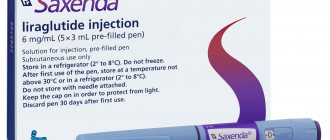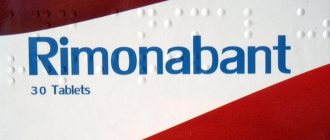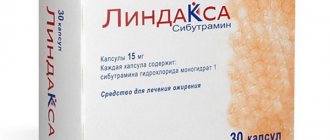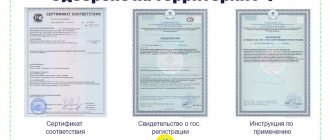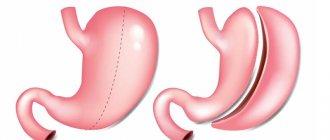Saxenda - reviews
Review:
A little background... I am 29 years old, height 164, weight a week ago was 102.5 kg, clothing size 54-56-58 (large breasts)... I have insulin resistance since the days of walking under the table. Throughout my childhood, I spent my entire childhood running around to doctors and heard only one thing: “DIETS DIETS DIETS!!!!!”, until one day, at the age of 19, I saw an intelligent doctor, who diagnosed this disease + PCOS (at that time I weighed about 90 kg) . With grief in half, in 3 years my body, as they say, was put back on its feet. Through treatment with hormones and Metformin, I reached the 60 kg mark. from that moment on, I completely gave up sugar, was always active and ate healthy, with the exception of “fasting” days (major holidays). But unfortunately the positive picture did not last long. 2 - 2.5 years after serious stress, my body sent me to hell and everything began to return to normal. (despite the fact that I still stuck to 1200-1500 kcal and without sugar and flour). It turns out that by the age of 26 I again returned to the starting point. The weight grew wildly, and in a month I could gain from 2 to 5 kg. I decided to see a doctor again, but unfortunately the doctor who saw me retired. Contact with her was lost. I grieved... Then there was a period of “money down the drain.” I changed several doctors and had a lot of tests. There is only one answer - DIET!!!! I began to realize that depression was approaching. I decided to independently repeat the previously completed course of treatment. Effect - 1 kg per month.
Some time later I gave up everything. My husband demanded that I stop with self-criticism and finally give myself a mental break. (thanks to him for that). And now, half a year later, after studying a bunch of reviews and recommendations from friends, I decided to go to the doctor again. Which I didn’t regret. She is the only one who was interested in “why is this so?”, who cared that I was suffering. After sitting at the reception for about an hour, the doctor studied absolutely the entire history of my illness, I gave her everything that I could have left in my hands that I could save from research, and we jointly made a decision - we need to give a push. you can't hesitate. Especially if I want to become a mother in the future. And so, the doctor decided that it would be advisable to start using Saxenda. I’ll be honest, it took me a long time to decide whether to take it or not (expensive, side effects, consequences, all these thoughts haunted me). The doctor assured that it is prescribed even to children from 12 years of age, but strictly under supervision and individual dosage. But this is a very serious drug. Moreover, he is relatively “young” in medicine. I struggled and struggled, but finally decided. The doctor prescribed injections in combination with taking Glucophage Long 1000. Exactly a week has passed. Injection at a dosage of 0.6 + half of Glucophage, all before bed. What a week I managed to notice. There is less swelling in the legs, 4 kg are gone. weight, periodic “cloudiness” with nausea occurs. Fresh air + mint chewing gum helps you quickly get back into the flow. Suppresses appetite. My diet: morning - coffee, cheese sandwich; lunch - broth or cottage cheese; dinner - steamed meat (chicken breast, beef), a couple of fresh cucumbers. I stuff all this into myself. I'm worried that my stomach won't thank me. and of course some water. I try to drink constantly, and in fact I’m almost always thirsty))))) I haven’t measured how much I drink. But more than usual.
I would also like to add something of my own. GIRLS!!!! Saxenda is a medicinal product, not a dietary supplement. It should appear in your first aid kit only (!) as prescribed by a doctor. If you weigh 55 - 65 kg and want a wonderful effect from this drug, think three hundred times whether it will harm you?!
Saxenda solution d/in 6mg/ml 3ml syringe pen N5 (Novo Nordisk)
Pharmacotherapeutic group Hypoglycemic agent - glucagon-like polypeptide receptor agonist. ATC code A10BX07. Pharmacological properties Mechanism of action The active substance of the drug Saxenda® - liraglutide - is an analogue of human glucagon-like peptide-1 (GLP-1), produced by recombinant DNA biotechnology using the Saccharomyces cerevisiae strain, having 97 % amino acid sequence homology to endogenous human GLP-1. Liraglutide binds to and activates the GLP-1 receptor (GLP-1R). Liraglutide is resistant to metabolic degradation, its half-life from plasma after subcutaneous administration is 13 hours. The pharmacokinetic profile of liraglutide, allowing it to be administered to patients once a day, is the result of self-association, in as a result of which slow absorption of the drug occurs; binding to plasma proteins; as well as resistance to dipeptidyl peptidase-4 (DPP-4) and neutral endopeptidase (NEP). GLP-1 is a physiological regulator of appetite and food intake. GLP-1R is found in several brain regions involved in appetite regulation. In animal studies, administration of liraglutide led to its uptake in specific areas of the brain, including the hypothalamus, where liraglutide, through specific activation of GLP-1R, increased satiety signals and weakened hunger signals, thereby leading to a decrease in body weight. Liraglutide reduces body weight in humans mainly by reducing the mass of adipose tissue. Reducing body weight occurs by reducing food consumption. Liraglutide does not increase 24-hour energy expenditure. Liraglutide regulates appetite by increasing the feeling of fullness and satiety, while reducing the feeling of hunger and reducing expected food intake. Liraglutide stimulates insulin secretion and reduces excessive glucagon secretion in a glucose-dependent manner, and also improves pancreatic beta cell function, which leads to decreased concentration glucose on an empty stomach and after meals. The mechanism of reduction in glucose concentration also includes a slight delay in gastric emptying. Pharmacodynamics In long-term clinical studies involving overweight or obese patients, the use of Saxenda® in combination with a low-calorie diet and increased physical activity led to a significant reduction in body weight. Effect on appetite, calorie intake , energy expenditure, gastric emptying and fasting and postprandial glucose concentrations. The pharmacodynamic effects of liraglutide were studied in a five-week study in 49 obese patients (body mass index (BMI) 30-40 kg/m2) without diabetes mellitus. Appetite, calorie intake and expenditure energy It is believed that weight loss when using Saxenda® is associated with regulation of appetite and the number of calories consumed. Appetite was assessed before and for 5 hours after a standard breakfast; ad libitum food intake was assessed during the subsequent lunch. Saxenda increased postprandial satiety and fullness and decreased hunger, estimated food intake, and unrestricted food intake compared with placebo. When assessed using a respiratory chamber, no treatment-related increase in 24-hour energy expenditure was noted. Gastric emptying Saxenda® resulted in a slight delay in gastric emptying during the first hour after ingestion, resulting in a decrease in the rate of increase in concentration, as well as the total concentration blood glucose after meals. Concentrations of glucose, insulin and glucagon on an empty stomach and after meals. Concentrations of glucose, insulin and glucagon on an empty stomach and after meals were assessed before and within 5 hours after a standardized meal. Compared with placebo, Saxenda® reduced fasting and postprandial blood glucose concentrations (AUC0-60 min) during the first hour after a meal, and also reduced 5-hour glucose AUC and rising glucose concentrations (AUC0-300 min). In addition, Saxenda® reduced postprandial concentrations of glucagon (AUC0-300 min) and insulin (AUC0-60 min) and increasing insulin concentrations (iAUC0-60 min) after meals compared to placebo. Fasting and increasing concentrations of glucose and insulin also assessed during an oral glucose tolerance test (OGTT) with 75 g glucose before and after 1 year of therapy in 3731 obese patients with and without impaired glucose tolerance. Compared with placebo, Saxenda® reduced fasting and rising glucose concentrations. The effect was more pronounced in patients with impaired glucose tolerance. In addition, Saxenda® decreased fasting concentrations and increased cumulative insulin concentrations compared to placebo. Effect on fasting and cumulative glucose concentrations in patients with type 2 diabetes mellitus who are overweight or obese. Saxenda® reduced fasting glucose concentrations and mean cumulative postprandial glucose concentrations. glucose concentration (90 minutes after a meal, average value for 3 meals per day) compared with placebo. Pancreatic beta cell function In clinical studies lasting up to one year using Saxenda® in patients with excess body weight or obesity and with or without diabetes mellitus, improvement and preservation of pancreatic beta cell function have been demonstrated using measures such as the homeostatic model of assessment of beta cell function (HOMA-B) and the ratio of proinsulin to insulin concentrations. Clinical efficacy and safetyEfficacy and The safety of using Saxenda® for long-term weight loss in combination with a low-calorie diet and increased physical activity was studied in 4 randomized, double-blind, placebo-controlled studies (3 studies lasting 56 weeks and 1 study lasting 32 weeks). The studies included a total of 5358 patients from 4 different populations: 1) patients with obesity or overweight, as well as with one of the following conditions/diseases: impaired glucose tolerance, arterial hypertension, dyslipidemia; 2) patients with obesity or overweight with insufficiently controlled type 2 diabetes mellitus (HbA1c value in the range of 7-10%), before the start of the study, to correct HbA1c in these patients, the following were used: diet and exercise, metformin, sulfonylureas, glitazone, individually or in any combination; 3) obese patients with moderate or severe obstructive apnea; 4) patients with obesity or overweight and concomitant hypertension or dyslipidemia who achieved a reduction in body weight of at least 5% using a low-calorie diet. Body weight A more pronounced reduction in body weight was achieved in obese/overweight patients receiving Saxenda® compared with patients receiving placebo in all study groups, including those with or without impaired glucose tolerance, type 2 diabetes mellitus, and moderate to severe obstructive apnea. In study No. 1 (obese and overweight patients with or without impaired glucose tolerance), the decrease in body weight was 8.0% in patients receiving Saxenda®, compared to 2.6% in the placebo group. In study No. 2 (obese and overweight patients with type 2 diabetes), the decrease in body weight was 5.9% in patients receiving Saxenda®, compared with 2.0% in the placebo group. In Study 3 (obese and overweight patients with moderate to severe obstructive apnea), the reduction in body weight was 5.7% in patients receiving Saxenda®, compared to 1.6% in the placebo group. In Study 4 (obese and overweight patients after a previous weight loss of at least 5%), further weight loss was 6.3% in patients receiving Saxenda®, compared to 0.2% in the placebo group . In Study 4, more patients maintained the weight loss achieved before treatment with Saxenda compared to placebo (81.4% and 48.9%, respectively). In addition, in all populations studied, a large proportion of patients receiving Saxenda achieved weight loss of at least 5% and greater than 10% compared with patients receiving placebo. In study No. 1 (obese and overweight patients with or without impaired glucose tolerance), a decrease in body weight of at least 5% at 56 weeks of therapy was observed in 63.5% of patients receiving Saxenda®, compared with 26 .6% in the placebo group. The proportion of patients who achieved greater than 10% weight loss at week 56 of therapy was 32.8% in the Saxenda group compared with 10.1% in the placebo group. Overall, weight loss occurred in approximately 92% of patients receiving Saxenda®, compared with approximately 65% in the placebo group. Weight loss after 12 weeks of therapy with Saxenda® Patients with an early response to therapy were defined as patients who a reduction in body weight of at least 5% was achieved after 12 weeks of therapy (4 weeks of dose escalation and 12 weeks of therapy at a dose of 3 mg). In two studies (obese or overweight patients without and with type 2 diabetes mellitus) 67.5% and 50.4% of patients achieved a weight loss of at least 5% after 12 weeks of therapy. With continued therapy with Saxenda® (up to 1 year), 86.2% of these patients achieved a reduction in body weight of at least 5% and 51% of at least 10%. The mean weight loss in these patients who completed the study was 11.2% from baseline. In patients who achieved a weight loss of less than 5% after 12 weeks of therapy at a dose of 3 mg and completed the study (1 year), the average weight loss was 3.8%. Glycemic control Therapy with Saxenda® significantly improved glycemic parameters in the sub- populations with normoglycemia, impaired glucose tolerance (average decrease in HbA1c - 0.3%) and type 2 diabetes mellitus (average decrease in HbA1c - 1.3%) compared with placebo (average decrease in HbA1c - 0.1% and - 0. 4%, respectively). In a study of patients with impaired glucose tolerance, type 2 diabetes developed in fewer patients receiving Saxenda compared to the placebo group (0.2% and 1.1%, respectively). More patients with impaired glucose tolerance experienced reversal of this condition compared to the placebo group (69.2% and 32.7%, respectively). In a study involving patients with type 2 diabetes, 69.2% and 56. 5% of patients receiving Saxenda® achieved target HbA1c ˂ 7% and ≤ 6.5%, respectively, compared with 27.2% and 15.0% in patients receiving placebo. Cardiometabolic parameters In a study involving patients with obesity or overweight with or without impaired glucose tolerance, when using the drug Saxenda®, there was a significant decrease in systolic blood pressure (by 4.3 points versus 1.5 points), diastolic blood pressure (by 2.7 points versus 1.8 points ), waist circumference (8.2 cm vs. 4.0 cm), and a significant change in fasting lipid concentrations (3.2% vs. 0.9% decrease in total cholesterol; 3.1% vs. 0.7% decrease in low-density lipoprotein %; increase in high-density lipoproteins by 2.3% versus 0.5%; reduction in triglycerides by 13.6% versus 4.8%) compared to placebo. Apnea-hypnea index When using Saxenda®, a significant reduction in the severity of obstructive apnea was observed compared to placebo, which was assessed by a decrease in the apnea-hypnea index (AHI) by 12 .2 cases per hour and 6.1 cases per hour, respectively. Immunogenicity Given the potential immunogenic properties of protein and peptide drugs, patients may develop antibodies to liraglutide after therapy with Saxenda®. In clinical studies, 2.5% of patients receiving Saxenda® developed antibodies to liraglutide. Antibody formation did not reduce the effectiveness of Saxenda®. Assessment of Cardiovascular Events Major adverse cardiovascular events (MACE) were assessed by a panel of external independent experts and defined as non-fatal myocardial infarction, non-fatal stroke and death due to cardiovascular pathology. In all long-term clinical studies with Saxenda®, 6 MACEs were observed in patients receiving Saxenda® and 10 MACEs in patients receiving placebo. The risk ratio and 95% CI when comparing Saxenda® and placebo was 0.31 [0.10; 0.92]. In phase 3 clinical studies, an average increase in heart rate (HR) of 2.5 beats per minute (range 1.6 to 3.6 beats per minute in individual studies) was observed in patients receiving Saxenda®. The greatest increase in heart rate was observed after 6 weeks of therapy. This increase was reversible and disappeared after discontinuation of liraglutide therapy. Patient-rated results Saxenda®, compared with placebo, improved patient-reported scores on selected measures. There was a significant improvement in overall scores on the Inventory of Weight on Quality of Life-Lite (IWQoL-Lite) and on all scales of the SF-36 Quality of Life Questionnaire, indicating a positive impact on the physical and psychological components of quality of life. Preclinical Safety Data Preclinical data based on pharmacological safety, repeated dose toxicity and genotoxicity studies did not indicate any hazard to humans. Two-year carcinogenicity studies in rats and mice identified thyroid C-cell tumors that were not fatal. The nontoxic dose (NOAEL) in rats has not been established. Monkeys treated for 20 months did not develop these tumors. The results obtained from rodent studies are due to the fact that rodents are particularly sensitive to the GLP-1 receptor-mediated non-genotoxic specific mechanism. The significance of the data obtained for humans is low, but cannot be completely excluded. The appearance of other neoplasms associated with the therapy was not noted. Animal studies did not reveal a direct adverse effect of the drug on fertility, but a slight increase in the incidence of early embryonic death was noted when using the highest doses of the drug. Administration of liraglutide in the middle of the gestational period caused a decrease in maternal body weight and fetal growth with an unexplored effect on the ribs in rats, and in rabbits - deviations in the skeletal structure. Neonatal growth was reduced in rats during liraglutide treatment, and this reduction was maintained after breastfeeding in the high-dose group. It is not known whether this decrease in the growth of newborn rats is due to a decrease in caloric intake by maternal individuals or the direct effect of GLP-1 on the fetus/newborns. Pharmacokinetics Absorption Absorption of liraglutide after subcutaneous administration occurs slowly, the time to reach maximum concentration (tmax) is about 11 hours after administration. In obese patients (BMI 30-40 kg/m2), after administration of liraglutide at a dose of 3 mg, the mean steady-state concentration of liraglutide (AUCτ/24) reaches approximately 31 nmol/l. Over the dose range of 0.6 mg to 3 mg, liraglutide exposure increases proportionally to dose. The absolute bioavailability of liraglutide after subcutaneous administration is approximately 55%. Distribution The average apparent volume of distribution after subcutaneous administration of liraglutide at a dose of 3 mg is 20-25 l (in persons weighing about 100 kg). Liraglutide is highly bound to plasma proteins (> 98%). Metabolism: For 24 hours after administration of a single dose of [3H]-liraglutide to healthy volunteers, unchanged liraglutide remained the main component in plasma. 2 metabolites were detected (≤ 9% and ≤ 5% of the total radioactivity level in the blood plasma). Elimination Liraglutide is metabolized endogenously like large proteins without the participation of any specific organ as the main route of elimination. After the dose is administered [3H] -liglutide, unchanged lyraglutide was not determined in the urine or feces. Only a small part of the introduced radioactivity in the form of metabolites of lyraglutide was excreted by the kidneys or through the intestines (6% and 5%, respectively). Radioactive substances are released by the kidneys or through the intestines, mainly during the first 6–8 days and are 3 metabolites. The middle clearance after the subcutaneous administration of luraglutide is approximately 0.9 - 1.4 l/h, the half -life is approximately 13 hours. Special groups of elderly patient patients are not required taking into account the age. According to the results of a population pharmacokinetic analysis in patients with obesity or an excess body weight aged 18 - 82 years, the age did not have a clinically significant effect on the pharmacokinetics of lyrabulutide during subcutaneous introduction of 3 mg in a dose of 3 mg. Liglutide after subcutaneous administration at a dose of 3 mg by 24% less than that of men. Based on the data on the response to the effect of the drug, the dose correction, taking into account the floor, is not required. The ethnicity of the results of population pharmacokinetic analysis, which included research data in patients with obesity or excess body weight of the European, non -graid, Asian and Latin American racial groups, ethnic The affiliation did not have a clinically significant influence on the pharmacokinetics of lyraglutide with subcutaneous administration of 3 mg of body -exposure of lyragelutide in a dose of 3 mg. The use of luraglutide at a dose of 3 mg daily provides an adequate exposure in the body weight range 60-234 kg, according to an assessment of the response to the system exposition of the drug in clinical studies. The exposition of lyraglutide in patients with a body weight of more than 234 kg was not studied. Pacitrus with impaired function of the livefarmacokinetics of lyragulutide was evaluated in patients with varying degrees of impaired liver function in a study of a single dose (0.75 mg). The exposition of lyraglutide was 23% and 13% less in patients with impaired liver function of light or moderate severity, respectively, compared to healthy volunteers. The exposition was significantly less (by 44%) in patients with a violation of a severe liver function (> 9 points according to the Child Pugh classification). Pacifications with renal failure of a single dose study (0.75 mg) The exposure of lyraglutide was less in patients with renal failure in case of renal failure Compared to people with normal kidney function. The exposition of lyraglutide was less by 33%, 14%, 27%and 26%, respectively, in patients with renal failure of light (creatinine clearance of 50 - 80 ml/min), average (30 - 50 ml/min), severe degree (severe (
Side effects of Saxenda
The drug provokes a large number of negative reactions. However, they do not appear immediately. Side effects differ, which is influenced by the type of pathology, the presence of other diseases, the general condition of the patient, and his predisposition.
Gastrointestinal tract
Vomiting due to nausea, loose stools or constipation. The digestion process is disrupted, and dryness in the mouth increases. Sometimes the contents of the stomach move into the esophagus, belching appears, gas formation increases, and pain occurs in the upper abdomen. Pancreatitis rarely develops.
A side effect of the drug may be vomiting due to nausea.
Allergies
Of its existing manifestations, in most cases the development of urticaria and anaphylactic shock is noted. The likelihood of the appearance of the last of the symptoms is due to a number of pathological conditions: hypotension, arrhythmia, shortness of breath, and a tendency to edema.
Of the existing manifestations of allergies when taking the drug, in most cases the development of urticaria is noted.
Impact on the ability to operate machinery
Considering that the drug in question has a minor effect on the heart and nervous system, it is permissible to engage in activities that require increased alertness, including driving.
However, caution should be exercised while monitoring symptoms
Composition and release form
The drug Saxenda is a hypoglycemic agent for the treatment of obesity in patients with a body mass index above 27 units. Additional indications for use are type 2 diabetes (non-insulin dependent), impaired lipoprotein metabolism and elevated blood cholesterol levels.
The medicine has been produced since 2015 in Denmark by Novo Nordisk. The release form is a solution (3 mg) for subcutaneous administration, placed in a syringe pen. For ease of use, the instrument has a division scale, which allows you to divide the product into several uses. One package contains 5 syringes.
The main component of the pharmaceutical product is liraglutide. The substance is a synthetic analogue of the hormone GLP-1 or glucagon-like peptide-1 (97% similar to the natural prototype), which is produced by the intestines and has an effect on the pancreas, stimulating insulin secretion. Auxiliary ingredients are:
- phenol;
- sodium hydrogen phosphate dihydrate;
- sodium hydroxide;
- propylene glycol;
- water for injections.
special instructions
Not used as a replacement for insulin in the treatment of diabetes.
Use with caution in people with heart failure. There is a risk of developing acute pancreatitis, and therefore the patient should know its symptoms and be constantly examined
If symptoms occur, hospitalization and discontinuation of the drug are required.
The patient should be aware of the risk of developing the following diseases:
- cholecystitis and cholelithiasis;
- diseases of the thyroid gland (up to the development of cancer);
- tachycardia;
- hypoglycemia in diabetics;
- depression and suicidal tendencies;
- breast cancer (there is no exact data on the connection with taking liraglutide, but there are clinical cases);
- neoplasia of the colon and rectum;
- cardiac conduction disorders.
Does not apply if the integrity of the packaging is damaged or the solution looks different than a clear and colorless liquid.
Has little effect on the ability to drive a vehicle. In patients using Saxenda in combination therapy with sulfonylureas, the risk of hypoglycemia increases, so they are not recommended to drive or operate other dangerous machinery during treatment.
Dispensed only with a doctor's prescription!
